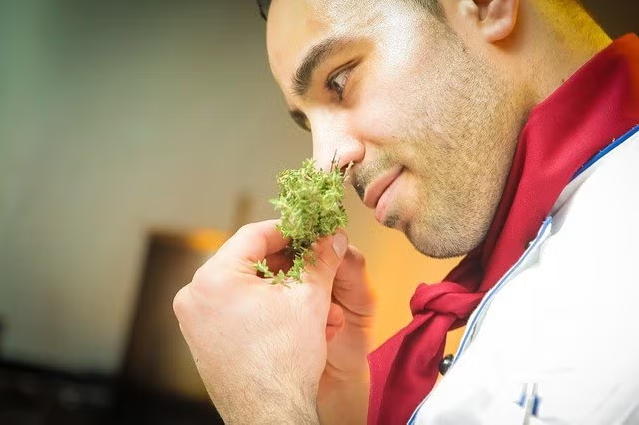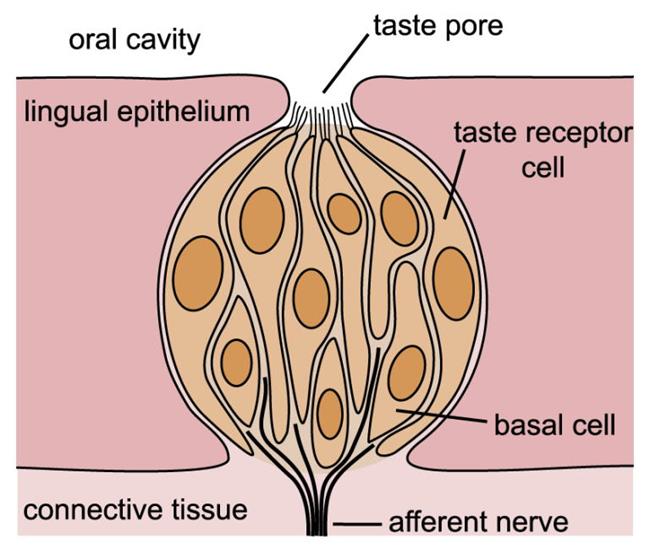10 Unbelievable Truths About How We Experience Taste
Why Food Tastes the Way It Does — And Why That’s So Fascinating
We all eat. Food is, at its core, the most essential fuel for human survival. But somewhere along the way, we turned it into something far more layered—a canvas, a currency of culture, even a form of entertainment. Some people chase luxury meals with ingredients they’ve never heard of. Others stick with the familiar, indifferent to culinary trends. And then there are those who blend science and creativity, always hunting for the next viral flavor.
But here’s the twist: strip away the fancy plating, the celebrity chefs, the food vlogs and aesthetic filters—what’s left? Just you, and a bite of something on your tongue. And that’s where it gets truly interesting.
Have you ever wondered how you even know what something tastes like?
We often take taste for granted. It’s just there, happening. But under the surface, it’s an incredibly complex process. The moment food enters your mouth, a whole system of chemoreceptors in your tongue starts firing signals to your brain. It’s not just sweet or salty—your body is decoding umami, bitterness, sourness, and a whole spectrum in between. And here’s a kicker—your sense of smell plays a massive role too. Without it, most flavors flatten out into dullness.
The science behind taste even explains some of those weird quirks—like why cilantro tastes like soap to some people (it’s in their genes!), or why certain cheeses smell awful but taste divine. This isn’t just biology—it’s a wild interplay between your body, your brain, and the evolutionary forces that shaped human preferences over thousands of years.
And let’s not forget: taste is deeply personal. The same spicy dish that delights one person might overwhelm another. Cultural context, personal experience, even memories tied to specific foods can color how we experience every bite.
10. You Can Taste This Chemical Without Even Putting It in Your Mouth—Seriously

Imagine this: you’re in a lab, maybe even a hospital, and someone’s handling a chemical called dimethyl sulfoxide—better known as DMSO. You’re not eating it, not inhaling it, not even licking anything. But then, out of nowhere, a strange garlic-like taste hits your tongue. Sounds like a sci-fi plot? Nope. It’s a real phenomenon, and it’s pretty wild.
DMSO is a powerful solvent with one bizarre superpower—it can pass through your skin like it’s nothing. No cuts needed. No broken skin. Just a touch, and it can penetrate cell membranes, sneak into your bloodstream, and deliver that unmistakable flavor to your taste buds. The crazy part? It can even slip through rubber gloves, making you wonder if they’re really offering any protection at all.
Well, DMSO can dissolve certain medications and help deliver them through the skin, which is actually useful in medical settings. But it’s not without its quirks—or its risks.
And get this: DMSO isn’t some exotic compound cooked up in a top-secret lab. It’s a by-product of paper manufacturing, derived from wood pulp. That’s right—you can trace it back to trees. The same stuff that helps turn trees into paper might, under the right conditions, leave you with a garlic aftertaste from just touching it.
9. Babies Have Three Times as Many Taste Buds as Adults

Let’s face it—babies are tiny, helpless humans who can’t even hold up their own heads, let alone tie their shoes or make toast. But while they may not be winning any survival awards, babies do have one superpower that even adults can’t match: their sense of taste.
You see, babies are born with about three times as many taste buds as adults. That’s right—while the average adult has around 10,000 taste buds, babies start life with a whopping 30,000. This means their world is a flavor explosion, at least for the first few months of life.
But why do babies have so many taste buds? It’s all about survival. Babies are born with a natural preference for sweet and fatty flavors, which makes sense when you think about it. Breast milk is naturally sweet, and fatty foods provide the energy babies need to grow and develop. Their heightened sensitivity to these flavors helps them latch onto what’s best for their survival.
On the flip side, babies aren’t big fans of certain other tastes. Salty flavors don’t register as strongly in their mouths, and both sour and bitter tastes can be downright offensive. This is why many babies turn their noses up at vegetables like broccoli or peas. To a baby, those bitter notes are so intense that they’re practically unpalatable.
Interestingly, this sensitivity to taste changes as babies grow into adults. Over time, the number of taste buds decreases, and by adulthood, most people are left with around a third of what they had as a baby. This reduction in taste buds is one reason why tastes change as we age. Foods that seemed unbearable as a child—like broccoli, brussels sprouts, or even coffee—often become enjoyable as adults.
8. Why Orange Juice Tastes So Awful After You Brush Your Teeth

It’s early morning. You’ve just brushed your teeth, everything feels minty-fresh, and then—bam! You take a sip of orange juice, and it’s like drinking bitter acid. What happened to the sweet, citrusy goodness?
The culprit isn’t the juice. It’s your toothpaste—or more specifically, what’s inside your toothpaste. Most commercial brands contain a foaming agent called sodium laureth sulfate (SLS). It’s there to give you that satisfying, bubbly lather. But this chemical has a hidden side effect: it temporarily blocks your sweet taste receptors.
Yes, that’s right—SLS interferes with your ability to detect sweetness. At the same time, it can amplify bitter flavors, which is why foods like orange juice suddenly taste like something you were never meant to drink. Without the balance of sweetness, the natural acids in the juice come across as harsh, even revolting.
Even more interesting? This doesn’t just apply to juice. Try eating fruit, sipping coffee, or biting into a pastry right after brushing. The whole flavor profile might feel off. It’s not your breakfast’s fault—it’s your tongue, tricked by chemistry.
7. How Smell Can Fool Your Taste Buds—And Your Brain Falls for It Every Time

Think taste is all about your tongue? Think again. Your sense of smell plays a far bigger role in how things taste than most people realize—so much so that your brain can be tricked into “tasting” things that aren’t even there.
Here’s the wild part: around 70% to 75% of what we consider to be “flavor” is actually created by aroma, not taste alone. That means your nose is doing most of the heavy lifting when it comes to enjoying your food. Ever noticed how bland everything tastes when you have a stuffy nose? That’s no coincidence—it’s science.
You can actually try this out at home. In simple experiments, researchers found that when participants were exposed to the smell of ham, they claimed the food they were eating tasted saltier—even though no extra salt was added. Remove the ham scent, and suddenly the “saltiness” disappeared. The only thing that changed? The aroma in the air.
This phenomenon is part of what scientists call retronasal olfaction—a fancy term for how smells from the back of your throat reach your olfactory receptors and shape how flavors are perceived. It’s not just about food either. Many flavor experiences—from your morning coffee to your favorite candy—are carefully designed with aroma in mind to trigger emotional and sensory responses in your brain.
In other words, your taste buds are easily influenced, and your brain fills in the rest of the story based on scent. It’s a clever evolutionary trick that helps us detect freshness, danger, or deliciousness without even realizing it.
6. Supertasters Can Taste More Intensely Than 75% of People

If you’ve ever bitten into something and thought, “Wow, this is way too intense!” while someone else casually enjoys it, chances are you’re not a supertaster. But what if I told you that some people experience flavors so vividly that a simple bite of broccoli or sip of coffee can feel overwhelming? Enter the world of supertasters, individuals who taste things far more intensely than the rest of us.
About 25% of people qualify as supertasters, while an even smaller percentage—less than 1%—are thought to be super-supertasters. The rest of us fall into the category of average tasters or, in some cases, non-tasters. But what exactly makes someone a supertaster?
As the name suggests, supertasters have an enhanced ability to detect flavors, particularly bitterness. For most people, bitterness is just one of many taste notes, but for supertasters, it can be downright overwhelming. Foods that many of us enjoy—like dark chocolate, coffee, beer, or even certain vegetables like broccoli and Brussels sprouts—can taste unbearably bitter to a supertaster.
But it’s not just bitterness. Supertasters experience all flavors more intensely. Sweetness might taste cloying, saltiness too sharp, and sourness uncomfortably tangy. Imagine biting into a slice of cake and feeling like it’s dripping with sugar syrup or sipping a soda that tastes like it’s been spiked with pure lemon juice. That’s the reality for a supertaster.
Interestingly, women are more likely to be supertasters than men, and certain ethnic groups also show higher rates of supertasting. For example, people of Asian, African, and South American descent are more likely to have this heightened sensitivity compared to those of European descent.
How do you know if you’re a supertaster? There’s actually a simple test involving a chemical called 6-n-propylthiouracil (PROP). When added to food, PROP is bitter to most people, but the intensity of that bitterness varies widely:
- Non-tasters can’t taste PROP at all.
- Average tasters notice a faint bitterness.
- Supertasters are completely repulsed by it, often describing it as unpleasant or even disgusting.
The reason supertasters experience flavors so intensely lies in their taste buds. Supertasters have far more taste receptors on their tongues than the average person, which makes them hypersensitive to even the smallest amounts of bitter, sweet, salty, or sour compounds. This heightened sensitivity is due to a genetic variation that affects how taste buds are distributed and how they function.
While being a supertaster might sound like a fun superpower, it’s not always a blessing. Many supertasters avoid certain foods and drinks that are considered staples in other diets, which can make social dining or trying new cuisines a challenge. On the flip side, their sensitivity might make them great at detecting subtle flavors in wine, coffee, or other foods where precision matters.
5. Your Taste Buds Die Every 10 Days—And You Didn’t Even Notice

Ever burned your tongue on a hot slice of pizza or a sip of scalding coffee? That familiar, annoying numbness that follows makes everything taste off for a while. But give it a few days, and your taste is back to normal. What’s happening isn’t some miraculous healing—it’s actually cellular turnover in action.
Your taste buds are far from permanent. In fact, the average one lives for just about 10 days before it dies and gets replaced. They’re made up of clusters of cells that detect basic tastes like sweet, salty, bitter, sour, and umami—and like most cells in your body, they’re constantly regenerating.
But here’s where it gets really interesting: this renewal process slows down as you age. Scientists have found that the ability to regenerate taste cells diminishes over time, and so does your ability to perceive flavors. Women typically begin experiencing this decline in their 50s, while men usually feel the shift in their 60s.
Not all taste bud cells follow the same lifespan either. Some live only a few days, while others may hang around for up to three weeks. The cycle is so subtle and efficient, you likely don’t notice the constant biological reboot happening on your tongue.
If you’ve ever wondered why older adults tend to gravitate toward stronger flavors or add more salt to their food, this is a big part of the reason. Their taste buds are simply less sensitive than they once were.
4. You Only Taste About 20% of the Salt on a Potato Chip

Have you ever bitten into a potato chip and immediately thought, “Wow, this is salty!”? Some chips are so salty they leave your mouth parched and your hands reaching for water. But here’s the surprising part: you’re only actually tasting about 20% of the salt on that chip.
Yes, you read that right. For every granule of salt on a chip, only a fraction of it actually makes it to your taste buds. The rest? It’s wasted, sitting on the surface of the chip or dissolving in ways that don’t reach your palate. Why is that? It all comes down to how salt dissolves and how quickly we eat chips.
Salt, like any other flavor, needs to dissolve in saliva to be detected by your taste buds. But here’s the catch: we don’t spend enough time chewing and savoring chips for all the salt to dissolve. Chips are designed to be eaten quickly—crunch, swallow, repeat. This fast-paced eating style means that most of the salt on the chip never has the chance to fully dissolve in your saliva, so it never reaches your taste buds.
This inefficiency in how we eat chips became a problem for companies like Lay’s, which wanted to make their snacks both tastier and healthier. Reducing salt content is a tricky balancing act. Too little salt, and the chips lose their signature flavor. Too much, and they’re linked to health issues like high blood pressure.
So, Lay’s came up with a clever solution: a new kind of salt crystal. These crystals are designed to dissolve more quickly on the tongue, allowing you to taste more salt even when less is used. With this innovation, Lay’s was able to reduce the sodium content in their chips by 25% while still keeping them delicious. It’s a win-win: a chip that’s both tastier and better for your health.
But why does this matter? Well, it highlights just how much of our eating experience is shaped by science and innovation. The way we eat—fast, mindless, and often on the go—affects not just how much we enjoy our food, but also how healthy it is for us. By understanding these quirks of human eating habits, companies can design products that strike the perfect balance between flavor and nutrition.
3. Nothing Tastes Spicy Because Spice Is Not a Taste

If you’re a fan of spicy food, you’ve probably heard someone say, “I love the taste of spicy!” But here’s the truth: spicy isn’t a taste. That’s right—what we often think of as the “spicy” flavor is actually a clever trick your brain plays on you.
Let’s break it down. When you eat something spicy, whether it’s a jalapeño, a ghost pepper, or a bottle of hot sauce, the “heat” you feel isn’t coming from your taste buds. Instead, it’s all about capsaicin, the chemical compound found in chili peppers. Capsaicin doesn’t actually taste like anything—it’s not sweet, salty, sour, or bitter. Instead, it tricks your brain into thinking you’re on fire.
Here’s how it works: capsaicin activates the heat sensors in your mouth, specifically a type of receptor called TRPV1. These receptors are normally triggered by high temperatures, like when you bite into something genuinely hot. But capsaicin fools them into thinking your mouth is on fire, even though there’s no actual heat. The result? That unmistakable burning sensation that makes spicy food so thrilling (or unbearable, depending on your spice tolerance).
The intensity of this sensation is measured in Scoville units, a scale that gauges how much capsaicin is in a pepper or sauce. For reference, a mild bell pepper scores a 0 on the Scoville scale, while a ghost pepper clocks in at a staggering 1 million+ Scoville units. Jalapeños, by comparison, are relatively tame at around 2,500–8,000 units.
But here’s the kicker: you’re not actually tasting the spiciness of the pepper. What you’re tasting are the other flavor compounds in the pepper or the seasonings added to the dish. Think about it—when you eat something spicy, the “spicy” part is just that burning sensation. The actual flavor comes from the saltiness, sweetness, acidity, or umami in the food. For example, a spicy tomato sauce might taste tangy and savory, while a spicy curry might have rich, earthy notes. The spiciness is just the icing on the cake—or, in this case, the fire on your tongue.
Interestingly, this is why some people enjoy spicy food so much. The combination of the heat (a pain response) and the underlying flavors creates a unique experience that many find addictive. Over time, some people even build up a tolerance to capsaicin, allowing them to enjoy spicier and spicier dishes without feeling overwhelmed.
2. Wait, What? Your Testicles Have Taste Receptors—But Not the Kind You Think

It sounds like the setup for a joke, but yes—testicles really do have taste receptors. Not taste buds, mind you—you’re not secretly equipped to savor soy sauce through your pants—but actual taste receptor cells like the ones on your tongue. And things got weird on the internet when this fact first came to light.
A viral wave of confusion, spurred by a Daily Mail article, led some overly curious folks to test this theory… by dipping their genitals in soy sauce. As you might imagine, this didn’t result in sudden bursts of flavor recognition. That’s because there’s a critical difference: taste buds (the ones that let you enjoy pizza and chocolate) are sensory organs located on your tongue. Taste receptors, on the other hand, are proteins found all over your body—including in your testes.
So what are these extraoral taste receptors doing down there? Surprisingly, scientists think they may be involved in detecting harmful substances, possibly playing a role in fertility and sperm production. One theory suggests that these receptors can help identify bacterial threats, acting like an internal surveillance system for the male reproductive system.
Still, the idea of “tasting” through your testicles is a complete misunderstanding of biology. The original scientific research never claimed you could taste flavors in the traditional sense. But the presence of sweet and umami receptors in unexpected places is a fascinating clue that taste is about more than just what’s happening in your mouth.
1. Gender and Ethnicity Affect Your Taste Perception

When it comes to sensitive topics like gender and ethnicity, discussions about differences can be tricky. But when it comes to something as universal as the sense of taste, science has revealed some surprising and fascinating insights. It turns out that what we taste—and how intensely we taste it—can vary significantly depending on our gender and ethnic background.
Let’s start with ethnicity. Research has shown that people of Asian ethnicity tend to have superior tasting abilities compared to other groups, particularly Caucasians. In fact, Asians are more likely to be supertasters, meaning they experience flavors—especially bitterness—more intensely than the average person. This heightened sensitivity might explain why certain dishes or ingredients, like bitter greens or strong spices, resonate more with Asian cuisines.
But it’s not just bitterness. Asians also seem to be more sensitive to metallic and sour tastes, which could influence their food preferences and cooking styles. For example, dishes that balance sourness, like Korean kimchi or Vietnamese pickled vegetables, are staples in many Asian cultures.
Interestingly, the study also revealed differences between men and women when it comes to taste. While women are generally more likely to be supertasters, men were found to have a preference for sweeter flavors. This could help explain why desserts marketed toward men often lean into bold, sugary flavors, while women’s preferences might skew toward more subtle or balanced sweetness.
When it comes to Hispanics and African Americans, additional research has shown that these groups tend to rate taste sensations higher than their Caucasian counterparts. This heightened perception of flavor might be one reason why many cuisines from these cultures are celebrated for their bold, vibrant tastes. Think of the rich spices in Mexican mole, the deep umami in Nigerian stews, or the complex flavors of Southern fried chicken.
This all ties back to a long-running stereotype about “white people’s food,” particularly British cuisine, being rather bland. While cultural preferences play a huge role in how food is prepared and enjoyed, it’s possible that differences in taste perception—rooted in ethnicity—could account for some of this perception. If a significant portion of Caucasians simply don’t experience flavors as intensely as other groups, it might explain why their traditional dishes often prioritize simplicity and subtlety over boldness.
Of course, these findings don’t mean one group “tastes better” than another. Taste is deeply personal and influenced by a mix of biology, culture, and individual experience. But they do highlight how diverse our sensory experiences can be—and how much our backgrounds shape the way we perceive the world, one bite at a time.

























